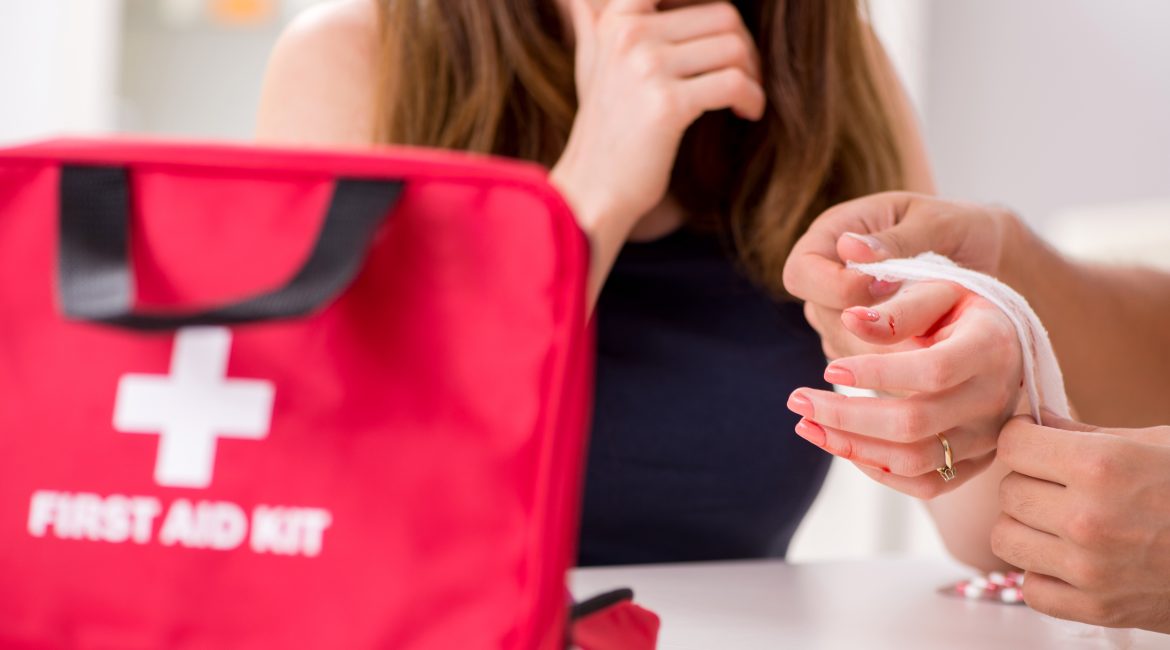Knowing basic first aid can be extremely helpful when treating medical issues like bad cuts and insect stings at home before seeking proper medical attention.
When medical emergencies happen in your home, it can be a scary situation to be in! Our immediate response is often panic, but keeping calm can be extremely helpful when using first aid techniques.
The following information can help you in some of the most common household injuries.
Remember to always get professional medical help if need be.
Related: 7 Signs That You Need to Go See a Doctor
Having health insurance can help cover the costs of medical bills (and it’s far more affordable than medical aid). So, make sure you have this to avoid waiting in lines at public hospitals or going into debt to afford private healthcare.
Major or bad cuts
Major or bad cuts can be classified as:
- Incision wounds caused by something like a razor
- Lacerated wounds which have torn edges and can be caused by crushing or a direct hit
- Puncture wounds which have small openings, but can be deep, such as a wound from a knife
When to seek medical help:
- The bleeding is severe
- You think there might be internal bleeding
- There is a chest or abdominal wound
- The bleeding won’t stop after 10 minutes of steady and firm pressure
- The wound is spurting blood
Here’s what you need to do…
Stop the bleeding
Apply pressure directly onto the cut or wound with a clean tissue, cloth, or gauze until the bleeding stops.
If the blood soaks through this material, then DO NOT remove it. Just put more cloth on top and keep applying pressure.
If the cut is on the leg or arm, then raise this limb above the heart to slow the bleeding.
Wash your hands again after giving first aid and before you clean the wound.
Clean the wound
Using soap and warm water, gently clean the wound, but make sure you rinse the soap out completely.
Do not use iodine or hydrogen peroxide, as this can damage the tissue.
Protect the wound
Apply an antibiotic cream to reduce infection risk and cover the wound with a sterile bandage.
Change this bandage every day to keep the wound clean and dry.
When to see the doctor
- The wound is deep
- The edges are gaping open or jagged
- The wound is on the person’s face
- The wound is red around it, tender, or has thick discharge — these are all signs of infection
- There are red streaks coming from the wound
- The wound is the result of a human or animal bite
- The area around the wound feels numb
Insect bites and stings
When to seek medical help:
- The person with the sting has been bitten or stung and has a bad allergic reaction such as hives, swelling in the face, difficulty breathing, fainting, or dizziness
- They have been bitten before and had a serious allergic reaction to a bite
Here’s what you need to do…
Remove the sting
Bees are the only insects that leave their stinger in a person’s skin. Remove this sting with a knife or credit card to get it out. No matter how you get it out, all that matters is that you remove it completely.
Clean the area of the sting
Wash the sting or bite with warm water and mild soap.
Treat the symptoms
- Make sure you remove any tight jewellery that might be near the area of the sting. Any rings or bracelets should be removed if bitten on the hand or arm, as these might be difficult to get off if there is swelling.
- Apply an ice pack to the area for 10 minutes, then remove for 10 minutes. Repeat this a few times.
- Elevate the area if the sting was on the leg or arm.
- Use an over-the-counter painkiller.
- Antihistamine also works very well for swelling.
Make sure you are prepared for the unexpected. You might not be able to predict getting bad cuts or stings, but you can prepare for it. Being prepared for unexpected medical events is pretty much why we created health cover that ensures your health is taken care of when things happen that you didn’t see coming.
Your Health Insurance Family,
Oneplan




